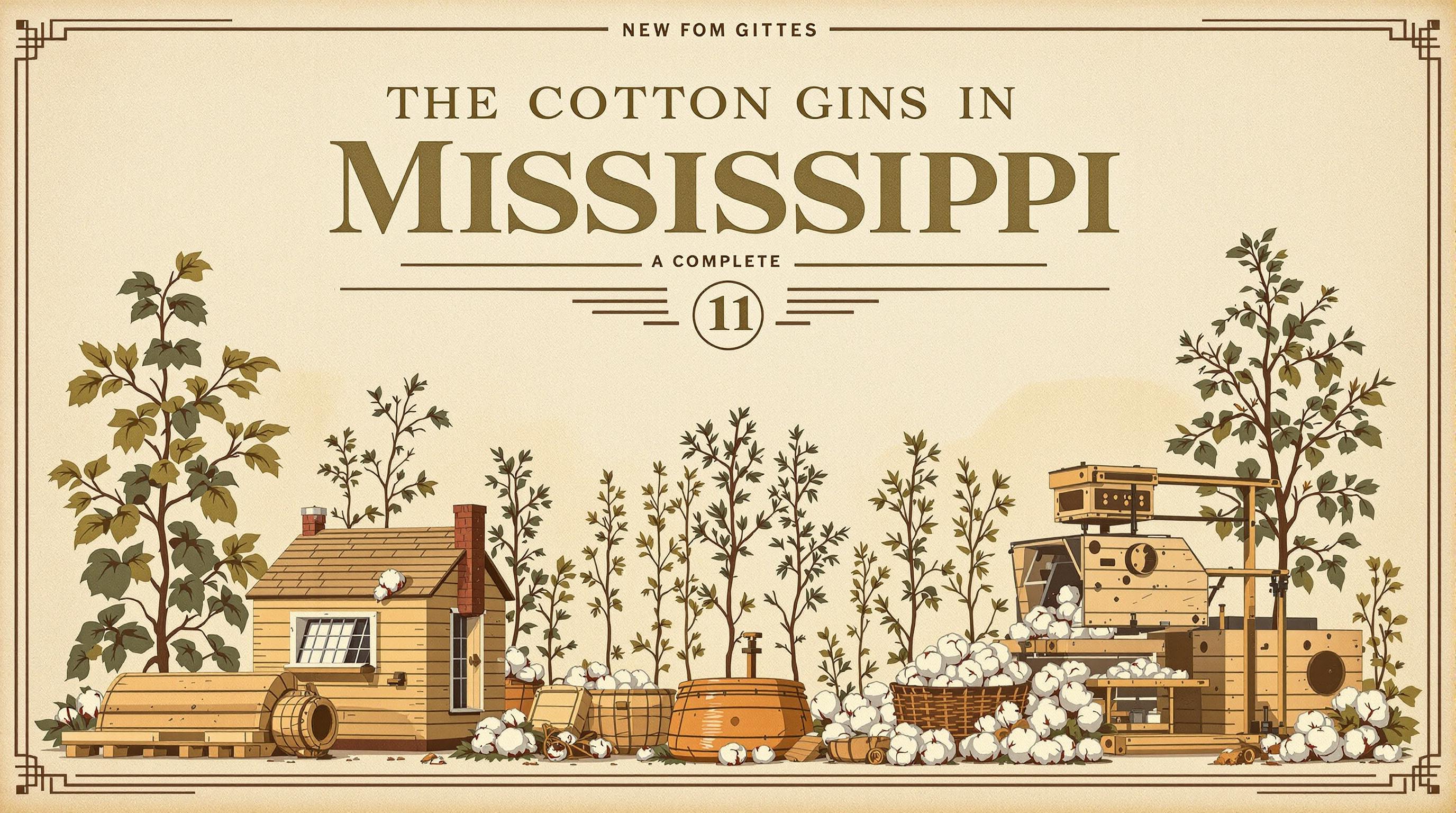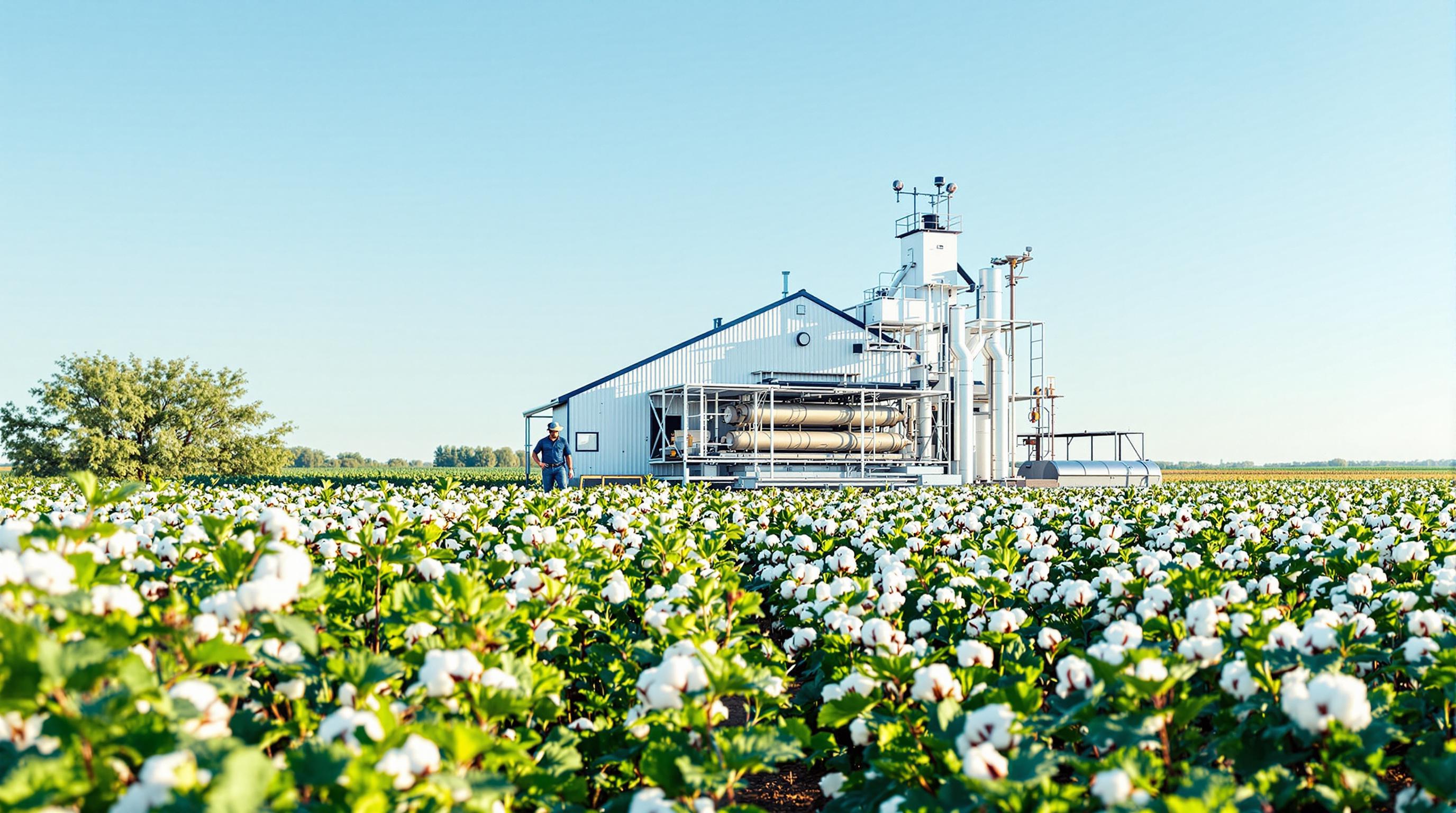Picking the right cotton seeds is key to improving yields, managing costs, and handling challenges like water shortages, pests, and diseases. Here’s what you need to know:
- Water-Efficient Seeds: Designed for dry areas, they save up to 50% water and maintain yields during droughts.
- Insect & Disease-Resistant Seeds: Protect against pests like bollworms and diseases like Fusarium wilt, reducing pesticide use and boosting yields.
- Maximum Yield Seeds: High-performing seeds with advanced genetics for regions with reliable irrigation.
Quick Comparison
| Feature | Water-Efficient Seeds | Insect/Disease-Resistant Seeds | Maximum Yield Seeds |
|---|---|---|---|
| Water Needs | Low, ideal for dry regions | Standard irrigation | High, requires consistent water |
| Pest Resistance | Moderate | Strong | Varies by variety |
| Yield Potential | Stable under drought | Consistent in pest-heavy areas | Best under ideal conditions |
| Best Regions | Arid, semi-arid | Pest-heavy zones | Irrigated areas |
| Maturity Range | Early to mid-season | Mid to full-season | Early to full-season |
Key Considerations:
- Match seeds to your region’s climate and soil.
- Focus on disease resistance and pest challenges.
- Balance cost with potential yield.
Start small by testing varieties on small plots to find the best fit for your farm.
Which are the Best Varieties for Spring Cotton Crop for 2024 ...
1. Water-Efficient Seeds
Water-efficient cotton seeds play a key role in regions where water is scarce. These seeds are designed to maintain productivity while using much less water, making them a practical choice for cotton farming in challenging conditions.
Drought Tolerance
These seeds are built to handle drought better, thanks to stronger root systems and improved cell-level resilience. Many successful varieties borrow genetic traits from drought-tolerant species like American Pima cotton (G. barbadense).
Some of the main features include:
- Root System Development: Deeper and stronger roots help absorb water more efficiently.
- Cellular Protection: Enhanced mechanisms keep cells intact during water stress.
- Water Use Efficiency: Converts available moisture into growth more effectively.
Yield Potential
Even under water stress, these seeds can maintain yields, reducing the typical losses caused by drought. For example, seed cotton yield (SCY) ranges from 0.01–1.5, and lint yield (LY) ranges from 0.1–1.45, with fiber quality showing moderate to high heritability.
Regional Suitability
Water-efficient seeds offer specific benefits depending on the growing region. In dry areas, they can cut water use by up to 50%. In semi-arid zones, water needs drop by 20–50%, while in rain-fed regions, they help stabilize production during unpredictable rainfall.
| Region Type | Benefits | Water Savings |
|---|---|---|
| Arid Areas | Maintains yield with less irrigation | Up to 50% with deficit irrigation |
| Semi-arid Zones | Better drought resilience | 20–50% less water needed |
| Rain-fed Regions | Adapts to irregular rainfall | Varies with precipitation patterns |
In Australia, farmers have paired these seeds with advanced irrigation systems to improve water management significantly. Meanwhile, conservation efforts in the U.S. Cotton Belt have shown how these seeds can support profitable yields while reducing water use.
Recent genetic research has pinpointed over 150 quantitative trait loci (QTLs) tied to productivity and fiber quality traits. These discoveries are guiding the creation of even more efficient seed varieties suited to specific regional needs.
This insight into water-efficient seeds sets the stage for exploring other seed options.
2. Insect and Disease Resistant Seeds
Cotton farming faces challenges from more than 166 insect pests. Seeds with built-in resistance to insects and diseases provide protection while maintaining strong yield potential.
Pest Resistance
Bt cotton has revolutionized pest control in cotton farming. These seeds are engineered with genes from Bacillus thuringiensis, offering built-in protection against major pests like bollworms, beet armyworm, and soybean looper.
Some key advantages of Bt cotton include:
- Cutting pesticide use by up to 50%
- Offering strong protection against bollworms
- Supporting populations of beneficial insects
- Reducing overall production costs
However, since 2015, pink bollworm survival on Bollgard II cotton in central India has highlighted the importance of effective resistance management. These pest-resistant traits play a crucial role in ensuring stable yields.
Yield Potential
Disease-resistant seed varieties have consistently delivered higher yields and reduced crop losses. Field trials demonstrate their effectiveness:
| Variety Type | Yield Impact | Additional Benefits |
|---|---|---|
| Bt Cotton (India) | 40% higher yields | 50% reduction in insecticide use |
| Fusarium-Resistant Pima | Comparable to standard varieties | Improved resistance to Fusarium wilt |
These results highlight the role of resistant seeds in boosting productivity and guiding localized farming strategies.
Regional Suitability
Different regions face unique pest and disease challenges, requiring tailored seed traits. Resistant seeds have shown significant success when matched to local conditions:
"It's probably the most environmentally acceptable way of trying to figure out how to control a disease. You're basically looking for a solution that is already there and available in the plant's genetics, and so it's not dependent on a chemical, which may or may not have some other impact on the environment." - Bob Hutmacher, Physiologist in Plant Sciences at UC Davis
Farmers need to choose seeds with resistance traits suited to their area's pest and disease history. For example, Bt cotton adoption in the USA grew from 15% in 1997 to 85% in 2019, showing strong trust in these varieties.
Major diseases impacting cotton include Fusarium wilt, Verticillium wilt, bacterial blight, and leaf curl disease. New resistant varieties continue to emerge, providing improved protection against these threats.
This resistance-focused strategy works hand-in-hand with other seed advancements to maximize yields.
sbb-itb-0e617ca
3. Maximum Yield Seeds
High-yield seed varieties are designed with advanced genetics to boost production while maintaining excellent fiber quality.
Yield Potential
BASF's FiberMax varieties are engineered for high performance. These seeds are known for their consistent results and enhanced yield optimization:
| Variety | Maturity | Key Features | Regional Suitability |
|---|---|---|---|
| FM 814AXTP | Early–mid | High yield potential and strong Verticillium wilt tolerance | Northern and Southern High Plains, Rolling Plains, Oklahoma |
| FM 757AXTP | Early | Adapts well to various soils; delivers excellent fiber quality | Southwest |
| FM 868AXTP | Mid | Exceptional emergence and strong early-season vigor | Southwest and Far West |
These varieties also come with built-in protection traits like Axant™ Flex Herbicide Tolerance Technology. This is the first quad-stacked herbicide trait, offering better weed control and reducing resistance risks. Their adaptability to different environments makes them a reliable choice for growers.
Regional Suitability
The performance of these seeds can vary depending on regional conditions. Saseendran S. Anapalli from the USDA-ARS Crop Production Systems Research Unit highlights how climate variability impacts outcomes:
"One of the main factors contributing to the vacillating, and at times conflicting, outcomes from those experiments is the climate variability (precipitation amount and timing and air temperature) the crops are subjected to across the crop seasons."
Here’s how regional performance plays out:
- Rainfed cotton systems average about 715 lbs of lint per acre (converted from 800 kg lint/ha).
- Irrigated cotton in the Mississippi Delta can yield approximately 2,200 lbs/acre more seed cotton compared to rainfed systems.
- Nationally, yields have been improving at a rate of 9–27 lbs of lint per acre annually (converted from 10–30 kg lint/ha/year).
To get the most out of these seeds, consider these factors:
- Moisture Management: Use supplemental irrigation during dry months (May–August).
- Planting Windows: Plant early to ensure full maturity before late-season stress.
- Soil Compatibility: Choose varieties that match your soil type and conditions.
With advanced genetics and carefully selected traits, these seeds deliver consistent results, even in challenging environments, ensuring reliable yields across various growing regions.
Seed Type Comparison
Let's compare key seed types based on important traits to help you make informed decisions.
| Characteristic | Water-Efficient Seeds | Insect/Disease Resistant Seeds | Maximum Yield Seeds |
|---|---|---|---|
| Water Requirements | Need less irrigation, perfect for dry areas | Follow standard irrigation practices | Perform best with consistent irrigation |
| Pest Resistance | Provide moderate natural defense | Engineered for strong pest protection | Resistance varies by variety |
| Yield Potential | Perform well in water-limited conditions | Deliver consistent yields in pest-heavy areas | Bred for top yields under ideal conditions |
| Best Growing Regions | Thrive in arid and semi-arid regions | Suited for areas with pest challenges | Best in regions with reliable irrigation |
| Maturity Range | Early to mid-season | Typically mid to full-season | Varies from early to full-season |
| Key Considerations | Focus on drought and heat stress tolerance | Prioritize disease and nematode resistance | Emphasize yield stability and fiber quality |
When choosing seeds, consider maturity timing, adaptability to your environment, and disease resistance.
Randy Boman, Research Director and Cotton Extension Program Leader at the Southwest Research and Extension Center in Altus, highlights the difficulty of selecting the right cotton variety:
"Selecting productive cotton varieties is not an easy task, especially in Oklahoma where weather can literally make or break a crop."
Key Factors to Keep in Mind:
- Match seed maturity to your season: Use early to mid-season seeds for shorter growing periods, and full-season seeds for longer ones.
- Evaluate environmental resilience: Choose varieties that can handle local stresses like storms or droughts.
- Address disease pressures: Select seeds that align with the specific disease challenges in your fields.
Practical Tips for Implementation:
- Test new varieties on small plots before scaling up.
- Review multi-year university trial data for performance insights.
- Balance input costs with potential returns to maximize profitability.
"Do not plan to leave less dense cotton varieties in the field until a freeze conditions the plants for harvest. Expect significant pre-harvest lint loss."
Ultimately, choose seeds that fit your local conditions, management style, and production goals.
Recommendations
When selecting cotton varieties, consider the specific needs of your region and the conditions of your fields:
For Southeastern U.S. Farmers:
- Opt for Deltapine 14, Station Miller, or Southland M1 to maximize water-use efficiency.
- Focus on cotton genotypes that perform well even with restricted root growth in hardpan soils.
For Texas and Southwest Regions:
- Use a mix of varieties to spread risk, especially important since Texas accounts for 40% of U.S. cotton production.
- Refer to Texas A&M AgriLife Research for guidance on managing Verticillium wilt pressure.
- Prioritize early to mid-season maturity varieties for dryland farming.
"Having high-quality seed coupled with a variety that emerges quickly, has early-season vigor that can handle early-season stresses, increases the opportunity for a strong finish come harvest time." - Scott Asher, Ph.D., Eastern Region Agronomic Manager for BASF
Selection Criteria Based on Growing Conditions:
- Drought-Prone Areas: Focus on water-use efficiency and early-season vigor.
- Disease-Heavy Zones: Prioritize resistance to Verticillium and nematodes, followed by storm resistance.
- High-Humidity Regions: Look for strong disease resistance and high emergence rates.
- Short-Season Areas: Choose varieties with early maturity and stable yields.
Implementation Tips:
- Align varieties with your field conditions and results from local trials.
- Aim to balance fiber quality with yield potential.
- Evaluate both early-season vigor and overall performance throughout the growing season.
"High quality is where the value will be. Farmers we're talking to want varieties that deliver high quality. And they have good options available."
Your success in cotton production hinges on tailoring your choices to your region's conditions, management practices, and production goals.


